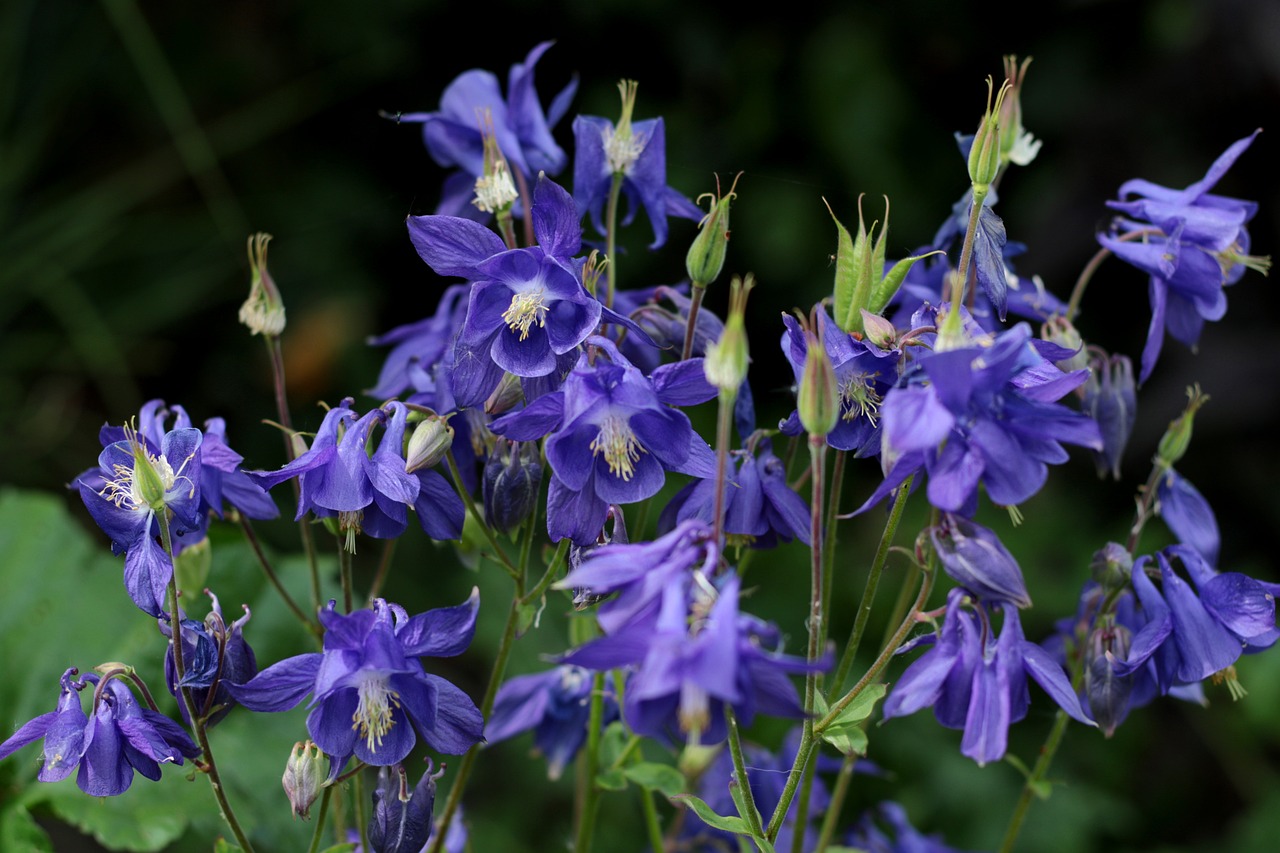
Do you dream of a flourishing garden, brimming with vibrant blooms, but struggle with limited sunlight? Fear not, fellow plant enthusiasts! With the right selection of shade-loving perennials, you can transform your shady haven into a captivating oasis in USDA Plant Hardiness Zone 6.
This guide unveils 15 captivating perennials, each boasting unique features and thriving in the dappled light. From the delicate charm of ferns to the architectural grandeur of hostas, these selections promise to add layers of texture, color, and visual interest to your shaded paradise.
Blooming Beauties: A Symphony of Color and Fragrance
1. Columbine (Aquilegia):
Dancing on slender stems, columbine boasts delicate, trumpet-shaped flowers in hues of blue, purple, white, and even yellow. These charming blooms add a touch of whimsy to the shade, attracting hummingbirds with their sweet nectar.
Bonus: Columbine readily self-sows, creating a delightful surprise each spring!
2. Hosta:
A true shade garden staple, hostas offer a diverse array of foliage options. From the majestic, heart-shaped leaves of ‘Giant Blue’ to the whimsical, rippled texture of ‘Curly Sue,’ hostas add a touch of elegance and texture to shady borders.
Pro Tip: Combine different hosta varieties for a captivating tapestry of colors and textures.
3. Astilbe:
If you crave airy, cloud-like blooms, look no further than astilbe. These feathery flowers come in shades of pink, purple, and white, adding a touch of romance and softness to the shade. Astilbe thrives in moist soil, making it perfect for areas that receive morning sun and afternoon shade.
Did you know? Astilbe foliage remains attractive throughout the season, even after the blooms fade.
4. Coral Bells (Heuchera):
Not just for their dazzling blooms, coral bells are prized for their stunning foliage. Their colorful leaves come in a kaleidoscope of shades, from fiery red and vibrant orange to cool blues and chartreuse green. Coral bells are low-maintenance and versatile, making them a perfect choice for borders, containers, or walkways.
Explore the possibilities: Play with different color combinations of coral bells to create a vibrant and dynamic display.
Fragrant Delights: Perfuming Your Shady Sanctuary
5. Sweet Woodruff (Galium odoratum):
Not only does sweet woodruff boast delicate, star-shaped white flowers, but it also releases a delightful vanilla-like fragrance. This low-growing perennial forms a charming groundcover, adding a touch of sweetness and freshness to the shade.
Tip: Plant sweet woodruff near pathways or seating areas to fully appreciate its captivating scent.
6. Lily of the Valley (Convallaria majalis):
These bell-shaped, white flowers dangle gracefully from slender stems, releasing a sweet, yet potent, fragrance. Lily of the Valley is a classic shade-loving perennial, but be aware that it can be invasive in some areas. Check with your local authorities before planting.
Caution: All parts of Lily of the Valley are poisonous if ingested.
7. Virginia Bluebells (Mertensia virginica):
Imagine a sea of delicate, drooping bluebells carpeting your shady haven. Virginia bluebells offer a mesmerizing display in spring, with their vibrant blue flowers contrasting beautifully against the green foliage.
Fact: Virginia bluebells prefer moist, well-drained soil and can be slow to establish, but their beauty is well worth the wait.
Architectural Wonders: Adding Structure and Form
8. Ferns:
From the delicate fronds of maidenhair ferns to the majestic stature of Japanese painted ferns, ferns offer a diverse range of textures and forms to your shade garden. They thrive in moist, humus-rich soil and add a touch of prehistoric charm to the landscape.
Experiment: Combine different types of ferns for a captivating textural interplay.
9. Japanese Forest Grass (Hakonechloa macra):
This graceful grass forms cascading mounds of soft, green foliage, adding a touch of movement and texture to the shade. Japanese forest grass is low-maintenance and versatile, making it an excellent choice for borders, containers, or even water features.
Pro Tip: Pair Japanese forest grass with bold-colored foliage plants for a striking contrast.
10. Ligularia:
For an architectural statement in the shade, look no further than ligularia. These tall perennials boast large, lobed leaves in shades of green and burgundy, often paired with yellow, daisy-like flowers.
11. Bee Balm (Monarda):
A magnet for pollinators, bee balm attracts butterflies, hummingbirds, and bees with its vibrant blooms and fragrant nectar. These colorful perennials come in shades of red, pink, purple, and white, and flower continuously throughout the summer, adding a burst of color to your shade garden.
Bonus Tip: Deadheading spent flowers encourages continuous blooming throughout the season.
12. Heuchera ‘Melting Point’:
This unique variety of coral bells boasts foliage that transforms throughout the season. Starting with a vibrant lime green in spring, the leaves gradually transition to shades of orange, pink, and finally, burgundy in fall. ‘Melting Point’ offers year-round interest and adds a dynamic element to your shade garden.
Low Maintenance: Heuchera is known for its ease of care, making it a perfect choice for busy gardeners.
13. Siberian Bugloss (Brunnera macrophylla):
Siberian bugloss offers a touch of elegance and whimsy to the shade. Its heart-shaped leaves provide a lush backdrop for clusters of vibrant blue forget-me-not-like flowers in early spring.
Did you know? Siberian bugloss is deer and rabbit resistant, making it a worry-free choice for your garden.
Adding a Touch of Brilliance: Shade-Tolerant Bulbs (h2)
14. Snowdrops (Galanthus nivalis):
These delicate white flowers, often with green markings, are among the first to herald the arrival of spring. Snowdrops bravely push through the winter snow, adding a touch of hope and optimism to the dormant shade garden.
Planting Tip: Plant snowdrops in the fall for blooms the following spring.
15. Trillium:
With their unique, three-petaled flowers in shades of white, red, and yellow, trilliums add a touch of whimsy and elegance to the early spring shade garden. These native woodland plants prefer moist, well-drained soil and thrive under the dappled light of deciduous trees.
Caution: Trilliums are slow to establish and may not flower for several years. However, their delicate beauty is worth the wait.
